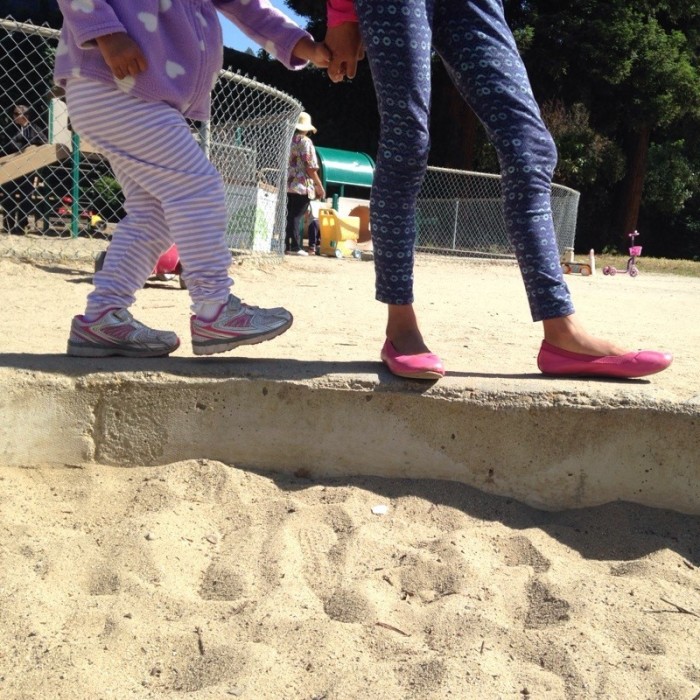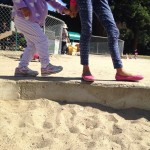Walking On The Edge
Anyone who has kids, or even has taken kids out on a walk, knows from experience that if there is a ledge, an edge, a walkable border, a curb, or anything just a bit higher than the surface the kid is walking on and it’s walkable, the kid is going to climb up and walk on it.
And anyone who has seen this will know that the kid will walk on the edge until it ends. Even if they can’t see how far it goes, even if the edge meanders, even if there is a huge drop at the end of the edge.
In my experience, the kid will always take the edge over the flat ground on which you’re walking, every time.
At first (if it’s your own kids), it’s cute and fun as they ask you to hold their hand. You might let it go a bit, but then you worry some and maybe even ask them to stop (they never do). And eventually you give up and hope for the best. (I’m not sure where I am in this progression!)
I hadn’t taken note of this behavior for some time until I was watching my two-and-a-half year old niece who was afraid to climb the ladder to the slide at the playground but insisted she walk the edge of the playground sandbox.
When I watched my own kids do it, I asked them a simple question: “Why do you always choose to climb on the edge?”
They responded with the following:
- “It’s more fun”
- “If you’re higher then you feel more bigger than everything around you”
- “It makes the walk more interesting”
- “It’s made of like different material than the sidewalk so it’s more interesting to walk on”
- “Going up and down (getting up on the edge and getting off) is a better way to walk than to just walk normally”
- “You can go faster on the ledge because no one is in front of you”
- And finally, “Because it’s there”
I was surprised by this long list of reflections that included, of course, the thrill of it. But it also included some other practical perspectives that have relevance in our work. “No one is in front of you,” and a desire to change perspectives (“you feel more bigger” and “going up and down is better”). Funny that as we get older we forget to walk on the edges. It might change our perspective if we did it every once in a while.
While of course many people have very adventurous lives and hobbies, I was thinking in the more general sense of choosing the path more difficult, more narrow, less traveled, possibly more fruitful (possibly less), and sometimes with a huge drop at the end.
Kids take risks. Adults don’t like to. That’s part of the growing, learning and differentiating process. But are there risks, even limited ones, we avoid in order to stay on the flat ground? Are there edges in the work we do, the projects we take on and the opportunities we have to make change that we choose not to climb up on? I know the answer is yes, and I wonder why that is in public sector agencies, where so much needs to change the way they function to be sustainable, responsive and impactful. Getting up on the edge — that place that’s different, that place that’s a little beyond where you are, that place where the end is unknown — may be worth the effort and provide just the change you were looking for.









Leave a Reply